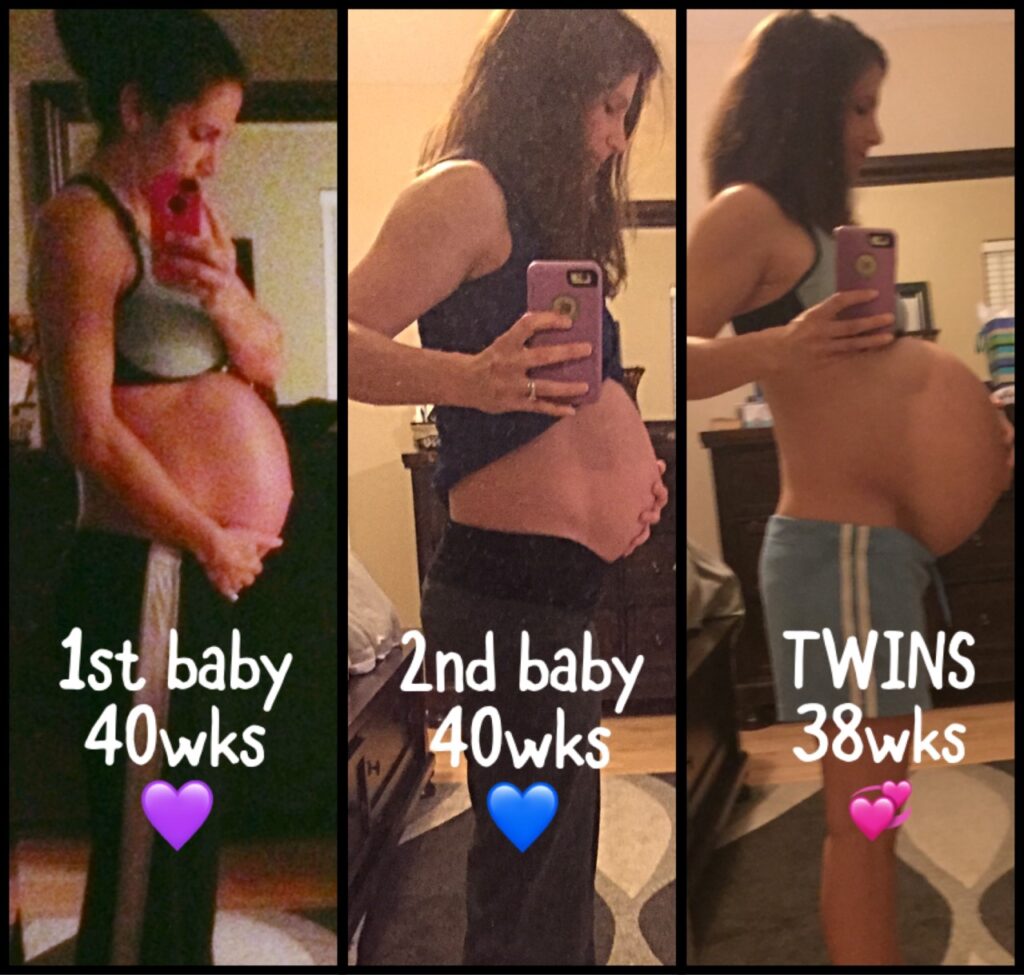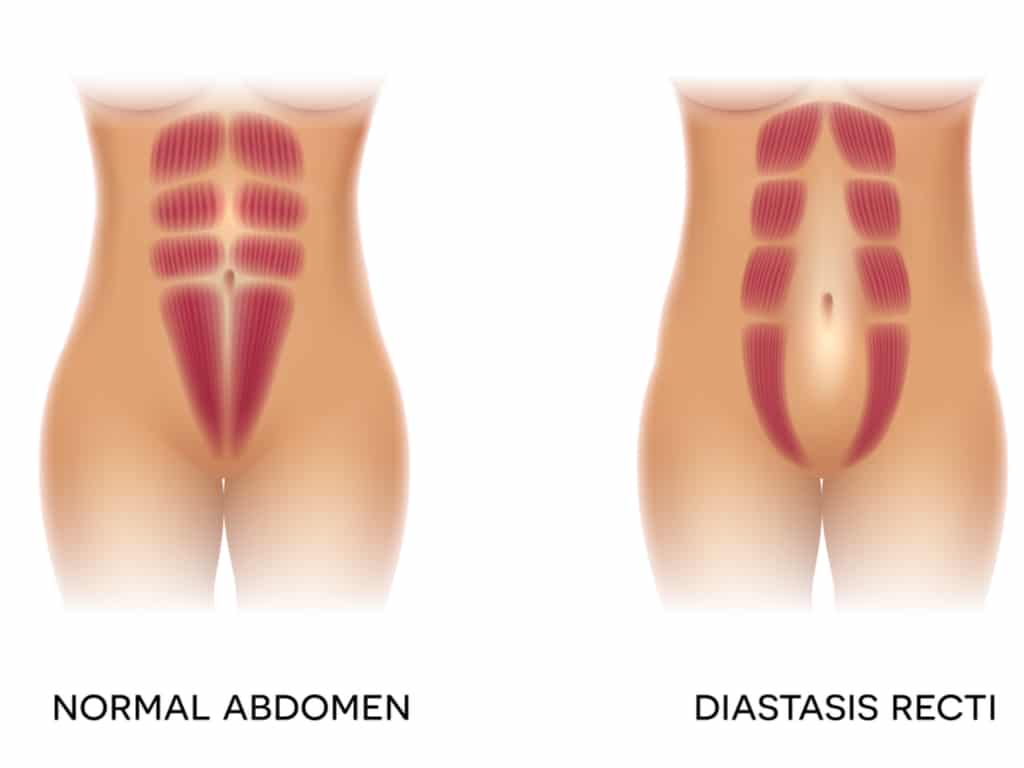Diastasis recti is a natural, normal and necessary stretching of the abdominal muscles to make room for a baby to grow. But what do you do when this condition sticks around long after giving birth? We’ll explain more and show you how to check for diastasis recti here!
Note: Even though we typically associate diastasis recti with the process of pregnancy and delivery, men can also develop this condition. Common causes of diastasis for men include injury, core weakness, or overdevelopment of external abdominal muscles.

During my first pregnancy, I became really frustrated when I asked my doctor for tips to reduce the severity of my diastasis recti. Her response floored me: “You can just have surgery to fix that when you’re done having kids!”
My reply: “What am I supposed to do until then? What about women who can’t afford it? Are we all just out of luck?”
What is Diastasis Recti?
During pregnancy, the linea alba (connective collagen between the rectus abdominal muscles) will stretch, and sometimes even tear, to accommodate the growing baby. This condition is called “diastasis recti abdominus.” “Diastasis” means separation or spreading apart. The “recti abdominus” are the superficial abdominal muscles.

100% of women on their due date have least some abdominal separation. After giving birth, the body begins to heal, but for many that healing can be slow or incomplete. Six weeks postpartum, 60% of women still have a lingering ab gap. A year postpartum, one in three women still have a clinically-diagnosable diastasis
Symptoms of diastasis recti include:
- Hip, back and abdominal pain
- Poor posture and belly “pooch”
- Urinary or fecal incontinence
- Constipation
- Prolapse
How to Check for Diastasis Recti
If you’ve given birth, your doctor may check for diastasis at your six week postpartum checkup. If they don’t, you can perform a simple self-test to get an idea of whether your abdomen is healing correctly.
To self-check for diastasis recti, follow these simple steps:
- Lie on your back, with knees bent and feet flat on the floor.
- Place a hand on the midline of your abdomen with your fingers flat.
- Place your other hand under your head for support.
- Lift your head slowly and begin applying pressure to the abdomen with your fingers.
- You shouldn’t be able to fit more than two fingers in between your left and right rectus abdominus muscles.
- If you can fit more than two fingers into the ab gap, or if your fingers sink in at least a knuckle deep, you likely have diastasis recti.
A self check can give you a pretty good idea of whether or not you have a diastasis, but it can also miss some harder-to-find abdominal separations. A more complex clinical test can find things that a self-test might miss. If you’re experiencing symptoms, don’t assume passing a self-test means you shouldn’t consult a PT!
What Next?
If your self test suggests that you do have a diastasis, it has helped to point out a problem, but not offered a solution. Each pregnancy is different, and the recovery process should be tailored to your unique needs. This is why it is important to see a physical therapist. They can make sure your diastasis is able to close and heal properly!
All women who are pregnant or have given birth should seek help to “restore the core.” There is no reason to accept that “mom bodies” need to be weak, fragile or plagued with pain.
Seeing a physical therapist is especially critical if you have prolapse, a hernia or have had any sort of abdominal surgery. (such as a C-section, hysterectomy or an appendectomy).
Most insurance plans cover physical therapy, and taking advantage of that benefit can save you time and trouble down the road. Have any questions? Let us know in the form below!









